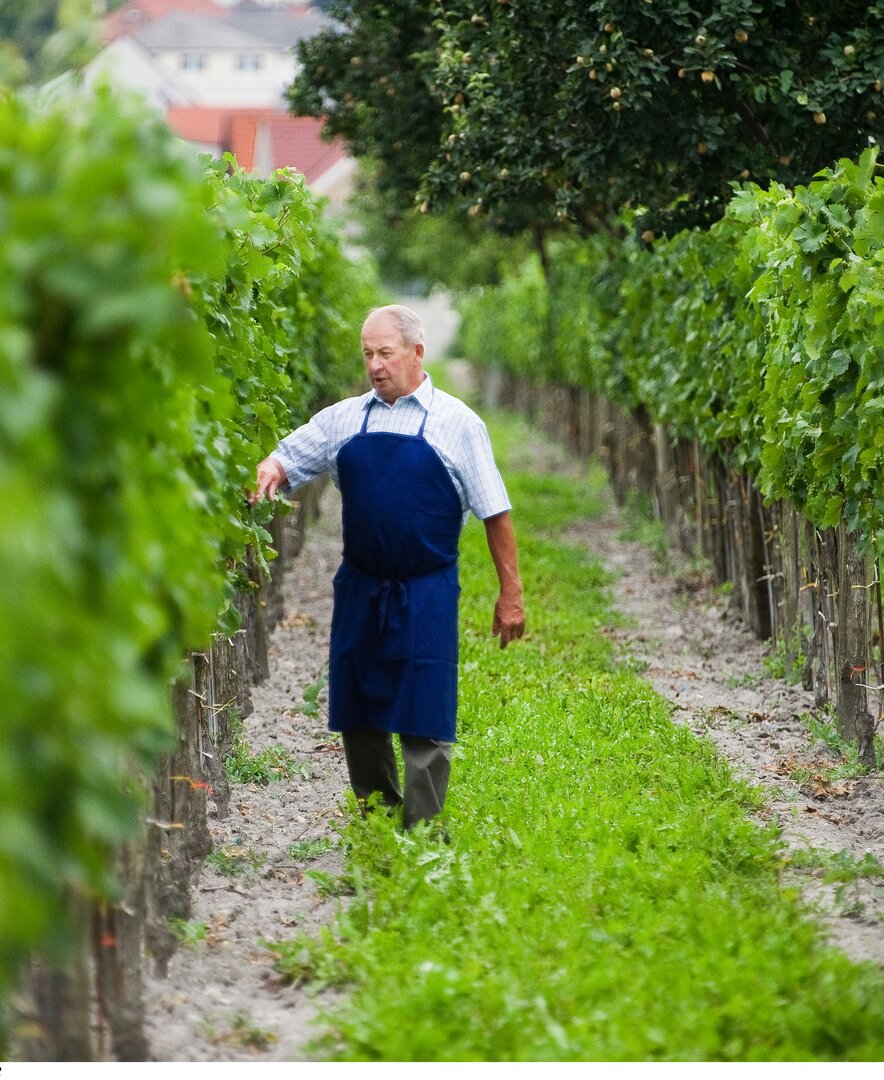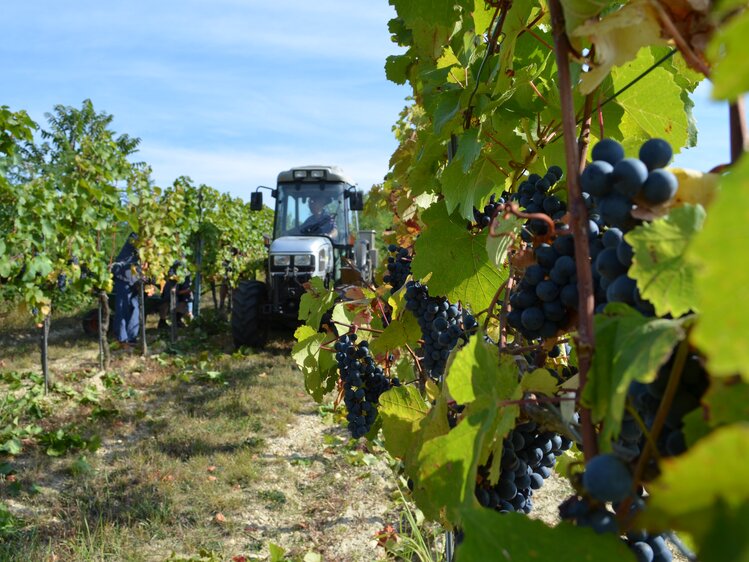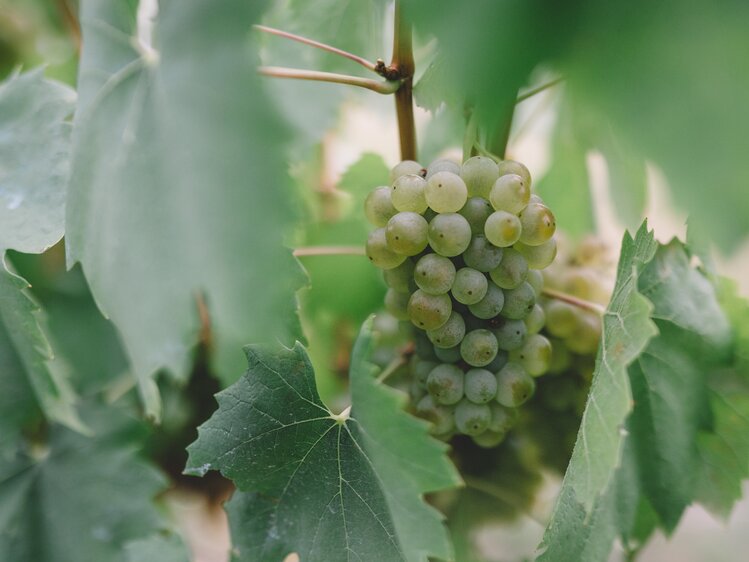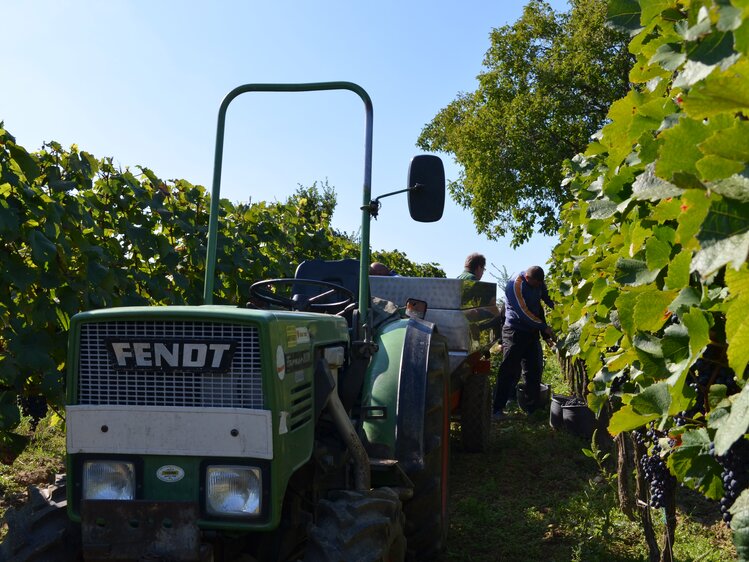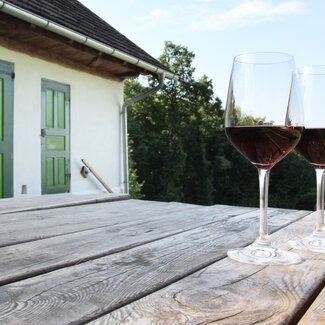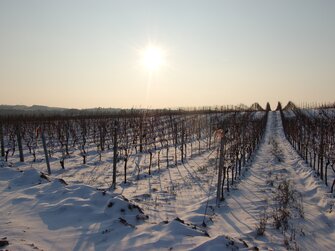
January, February
For a winemaker, the year starts with winter pruning. It's especially important because it has a large impact on the yield and its quality. Dry, older canes are removed, thereby rejuvenating the vine. The plant residues are removed from the vineyard and burned. Alternatively, the farmers cut them into woodchips and incorporate them into the soil.
March
In March, it's time to spruce the vineyard up by carrying out minor maintenance work on the trellises. For instance, rotten wooden posts are replaced, wires are tightened or renewed. Then, the grapevines are tied to the wires.
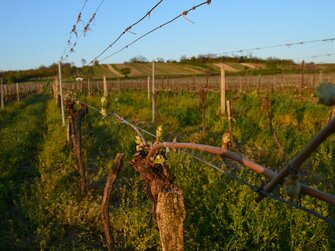
April, May
The vines are budding in late April/early May. Around this time, the buds open and the green shoots poke out. Now, overnight frost (especially at a later time of the year) is a great risk. It can severely damage the young shoots. Excess shoots are removed in May. Regular pruning and maintenance throughout the growing season keeps the grapevines manageable and ensures a good quality.
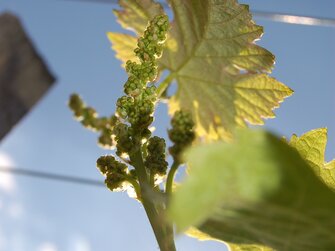
June
At the beginning of June, the grapevines begin to flower. The time of the flowering season allows winegrowers to roughly predict when the harvest will take place. After flowering, there is more work to be done: the young shoots, now up to 40cm in length, are tied to the wires. This way, the new canes are trained to grow horizontally along the desired wires of the trellis and can no longer be broken off by the wind. At the end of June, after flowering, the berries are about as large as a pellet.

July
Excess side shoots are removed between the end of June and the start of July. At the start of July, the berries are already the size of a pea. Clusters of grapes hang on the vines. As soon as the shoots are about 1m in length, topping, i.e. cutting off the ends of the shoots, is performed. A thick wall of leaves covers the clusters, especially between July and August.
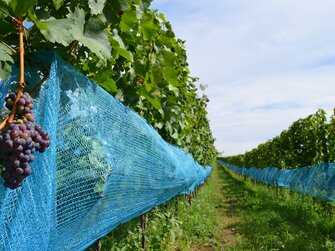
End of July – August
Grape thinning is an important task carried out in mid-July and August. It allows achieving high-quality production by ensuring a low yield. Around the middle of August, the grapes have grown to their full size. From mid-August onwards, excess leaves are removed to make sure that the grapes get enough sunshine and develop a nice colour. This is especially important for red varieties. In late August/early September, the grapes soften. From this time on, weather conditions have a particularly decisive influence on the grapes' and therefore also the wine's quality.
September, October
Depending on the region, location, grape variety, weather conditions and maturity of the grapes, the harvest begins from mid-September onwards. Each grape variety is harvested separately and brought to the pressing house for further processing. It's very important to only use fully mature and healthy grapes for winemaking. In most cases, the grapes are picked by hand. This way, damaged or unripe grapes can be discarded straight away.
